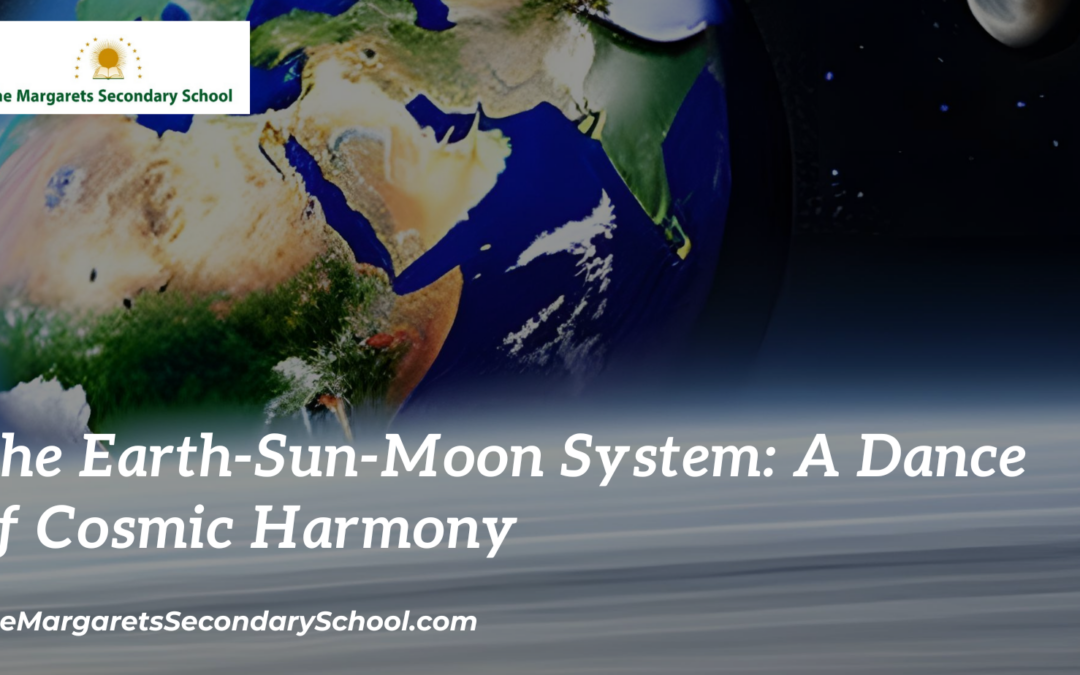The Earth-Sun-Moon System
In the vast expanse of the universe, our very existence is intimately tied to the intricate interplay of celestial bodies. Among the most significant relationships in our cosmic neighborhood is the Earth-Sun-Moon system. This dynamic trio engages in a ballet of gravitational forces and interactions, shaping the cycles of day and night, the changing seasons, and the mesmerizing phases of the moon. Let’s delve into the fascinating details of this celestial dance.
The Central Player: The Sun
At the heart of this system lies the Sun, a colossal ball of searing hot plasma that radiates light and heat. Its gravitational pull is what holds the Earth and other planets in orbit around it. The Sun’s energy is the primary driver of Earth’s climate and weather patterns, and its immense heat powers the intricate processes that sustain life on our planet.
The Blue Oasis: Earth
Earth, our home, is the second player in this cosmic choreography. Positioned at an ideal distance from the Sun, Earth enjoys conditions conducive to life. As our planet orbits the Sun in an elliptical path, it experiences varying distances, leading to the changing seasons. The axial tilt of Earth is responsible for the tilt of the planet’s rotational axis relative to its orbital plane, which gives rise to the different seasons throughout the year.
The Enigmatic Partner: The Moon
Completing this celestial ensemble is the Moon, Earth’s only natural satellite. Despite being much smaller than Earth, the Moon’s influence on our planet is substantial. Its gravitational pull creates ocean tides, shaping coastlines and ecosystems. The Moon’s phases, from new moon to full moon and back, are a result of its changing position relative to the Sun and Earth.
The Cosmic Dance: Orbits and Phases
The Earth-Sun-Moon system’s movements are governed by the laws of gravity and motion established by Sir Isaac Newton. Earth orbits the Sun in an elliptical path, while the Moon orbits Earth in a slightly elliptical orbit as well. The interaction between these orbits leads to captivating phenomena.
The Moon’s phases arise from its position relative to the Earth and Sun. When the Moon is positioned between Earth and the Sun, we witness a new moon. As the Moon orbits, we observe different fractions of its illuminated side, leading to crescent, quarter, gibbous, and full moon phases.
Eclipses: Celestial Alignments
Occasionally, the Earth, Moon, and Sun align in such a way that they cast shadows on one another, resulting in eclipses. A solar eclipse occurs when the Moon passes between the Earth and the Sun, blocking out the Sun’s light. Conversely, a lunar eclipse takes place when the Earth comes between the Sun and the Moon, causing the Moon to fall into the Earth’s shadow.
The Fragile Balance
This delicate equilibrium that sustains our planet’s rhythms is a result of the precise conditions that have evolved over billions of years. Small changes in any part of the Earth-Sun-Moon system could lead to dramatic alterations in our environment and way of life.
In conclusion, the Earth-Sun-Moon system is a captivating symphony of gravitational forces and cosmic interactions that shape our planet’s very existence. From the changing seasons to the phases of the moon, every aspect of our daily lives is influenced by this cosmic dance. As we continue to explore the mysteries of the universe, let us not forget the wondrous harmony that plays out right above our heads every day and night.





